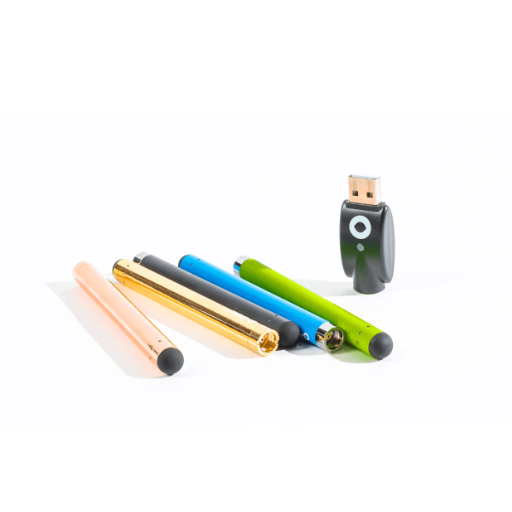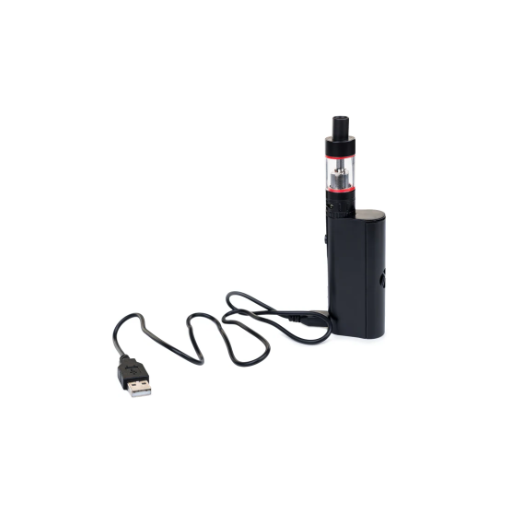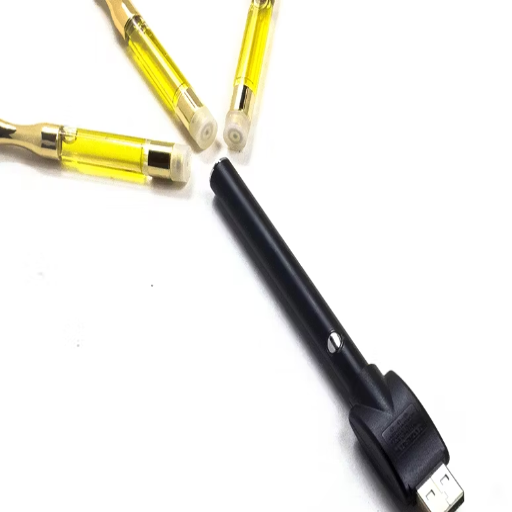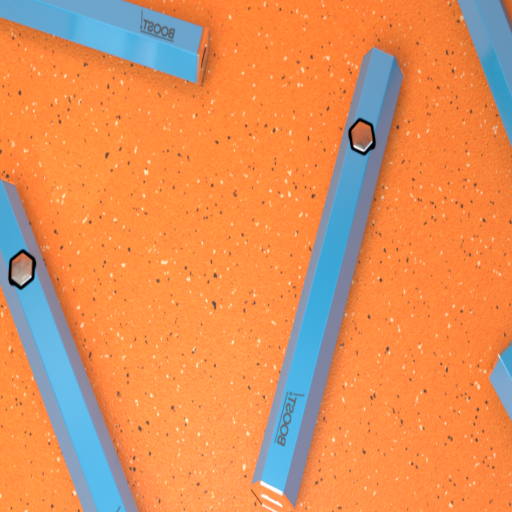When transitioning to vaping, understanding the fundamental aspects of device maintenance is crucial, and one of the most important factors is charging your vape. Proper charging not only ensures consistent performance but also extends the lifespan of your device. This guide is specially crafted for new vapers seeking clarity on charging times, techniques, and best practices to optimize their vaping experience. By addressing common questions and offering actionable insights, this article provides a comprehensive framework to equip readers with the knowledge they need for efficient vape usage. From battery types to safe charging habits, we aim to cover the essential details every beginner should know.
How long does it take to fully charge a rechargeable vape pen?

Average charging time for most vape pens
Average charging time for most vape pennes ranges between 1 to 4 hours, which depends mainly on battery size and charger specifications. I personally know devices that have smaller batteries such as 300-650mAh tend to Charge much quicker, around 1 to two hours while mid level batteries 900 to 1200mAh take around 3 to 4 hours.
- Battery Capacity (mA h): Bigger batteries tend to take longer when it comes to charging.
- Charger Output: As stated above, these are often combined into Watts/Amps and sometimes even Volts: Examples: A standard USB charger with 5V/1A output will definitely be taking longer to charge than a device that has a 5V/2A output. But there are devices that may not be suitable for higher power Amps, as mentioned, and those Particular gadgets are going to be slower.
- Input of the device: Always confirm with the manufacturer to see if the charger you are using has the output that the device accepts so that there is no overheating or degrading of the battery.
Bateries definitely perform much better when used with the charger which was given by the manufacturer so the battery life is also increased. Overcharging also negatively impacts battery performance.
Factors that can extend charging time
Several factors can affect the time taken to charge a vape pen completely. Below are some of the most common ones that also have a deeper meaning:
- Battery Capacity (mAh): The milliampere-hour (mAh) rating of the battery has a notable impact on charging. Bigger batteries, for instance, those rated at 3000mAh, will take longer to charge than the smaller rated 1000mAh batteries given the same power source.
- Charger Output: Reduced charger output such as 5V/1A will take longer than 5V/2A because it reduces the flow of current. Also, never forget to check the recommendations for charger compatible with the device by the manufacturer.
- Charging Circuit Design: Intelligent charging of some devices that have certain advanced features prioritize battery safety above speed. To avoid overcharging, these devices reduce the current in the last phase of charging to boost the battery life.
- Temperature Conditions: The safety features of lithium-ion batteries are very protective. Extremely low or high temperatures will trigger these safety features and limit the charging to avoid damage.
- Cable Quality and Connection Efficiency: Damaged or cheap cables will cause a voltage drop, which will lead to an inefficient transfer of energy, which ultimately leads to longer charging periods.
I recommend referring directly to the manufacturer’s user manual for the exact parameters. For instance, when using a charger rated for 5V/1.5A, a standard 2000mAh battery should charge in approximately 1.3-1.5 hours under ideal conditions.
Can you charge disposable vapes?

Differences between rechargeable and non-rechargeable disposables
Rechargeable disposables vapes, as the name suggests, are disposable, but they are equipped with a built-in lithium ion battery that is rechargeable and can be reused multiple times. The devices often come with charging ports, which are typically USB-C or micro-USB, and are made for a longer life use because the e-liquid reservoir can be emptied, which does away with the device itself. The rechargeable disposables devices have battery capacities between 300mAh to 800mAh, with a required charging voltage of 5V and vary in current specifications between .5A to 1A depending on the devices. In that sense, a rechargeable 400mAh vape would take upwards of 30-50 minutes to charge fully.
On the contrary, non-rechargeable disposable vapes are devices made from nonremovable parts and come pre-filled with e-liquid, as well as pre-charged, designed to yield a specified number of puffs or time usage. Non-rechargeable disposable vapes are devoid of charging ports and need to be thrown away, along with the consumed e-liquid, after the battery runs out. The non-rechargeable models usually have battery capacities between 200mAh and 350mAh, which is just enough to outlast the e-liquid without any user intervention.
Users’ individual needs and preferences, such as convenience or economical value, dictate the choice between the two. Simplistic with no upkeep needed are non-rechargeable models, while rechargeable disposables are more multifunctional and may be more eco-friendly. When in doubt as to which kind to use, consult the specifications or the package of the product to ensure compatibility with your vaping requirements.
How to identify if your disposable vape is rechargeable
The first step is to check if the device has a visible charging port, such as micro USB, USB C, or other connector types. This will tell you if the device can be recharged. I also look for the word “rechargeable”, specifications concerning the battery, or any instructions mentioning charging cycles or USB compatibility.
- Battery Capacity: Most range from 300 mAh to 1000 mAh for rechargeable disposables.
- Charging Interface: Micro USB or USB C ports, depending on the model.
- Voltage Output/Input: Input usually ranges from 5V/1A to 5V/2A to maximize charging efficiency.
Always refer to the product’s technical documentation or markings on the unit to confirm these details. Typically speaking, the absence of a charging cape or any comparable preset features results in the device being primarily non-rechargeable.
Charging instructions for rechargeable disposable vapes
Follow these steps to charge your rechargeable disposable vape:
- Check the Charging Port: Attempt to find the interface for charging on your vape device; it may be a Micro-USB or USB-C port. Make sure that the charger you have is suitable for the port type.
- Use a Compatible Charger: Charge using an adapter or USB charger that is rated at 5V/1A or 5V/2A, these parameters are recommended for best charging results and also overheating or damaging the battery.
- Connect The Charger: Plug your charging cable in the vape’s charging port and then insert the other side to a USB port on a computer, a wall adapter, or a powerbank.
- Monitor Charging Status: Many devices now have LED indicators, and while the device is charging, you will seethe light blinking or illuminated, signaling that it is currently charging. Always make sure that you check the user manual for light patterns since different devices indicate charging differently.
- Avoid Overcharging: Unplug your vape if the LED light has turned off or turned into a steady light; this is an indication that the battery is charged.
The requisite voltage and amperage, inputs, at any instance, should be consistent with 5V/1A – 5V/2A standards. These limits have been put in place to prevent the unit from overheating due to higher current flows, as well as under charging with lower ratings.
What’s the best way to charge your vape for optimal battery life?

Recommended charging practices
To improve the performance and life of your vape’s battery, you should stick to these charging methods:
- Use the Correct Charger: Only use the charger provided by the manufacturer or other devices that are specifically said to be compatible with the device. The volts and amps must be in the required range. Overheating may occur if the device is outside this range, and charging may be ineffective, which may also shorten the life of the battery.
- Avoid Overcharging: Do not leave the device unattended while charging. Disconnect as soon as the LED indicator indicates a full charge. Built in overcharge protection does exist in many vapes, however it is always good practice to lower exposure to electricity.
- Charge At Room Temperature: Depending on where one lives, charging should occur from a stable place, ideally from 10° to 25°C or 50°F to 77°F. Extremes of either ends will result in poor battery performance over time.
- Avoid Fast Charging Adapters: Fast adapters can be quite helpful but they usually tend to exceed the safe limits in terms of amps. The amps for vape batteries should never be too high. Fast adapters may result in overheating or losing battery capacity over time.
- Do Not Use Damaged Cables Or Ports: Make sure that the charging port and cable are working properly; otherwise, it may result in inconsistent power, which may lead to short circuits or, worse, damage to the battery.
Adhering to these guidelines will guarantee that the battery works optimally while simultaneously ensuring safety and longevity.
Avoiding overheating and overcharging
To prevent the device from overheating and overcharging, I make sure to practice a few tricks involving reliability and safety. For one, I always make use of my device’s charging specifications. My required voltage (V) and Amperage (A) are predefined by my device’s manufacturer, so their specs should always be adhered to. If I have a device with a charging rate of 5V/2A, I definitely could not over-use chargers with higher outputs without risking thermal stress and over-charging.
Moreover, I make sure that after charging, the device is not plugged in for extended periods. Most over-modern batteries have built-in over-charging protection circuits, but leaving the device plugged in can still generate heat over time, especially if it’s put in places with no proper air flow. I also monitor the charge of the battery for too much heat emittance; lithium-ion batteries’ optimal temperature range is typically between 20°C 45 45°C. Deliberate exposure to such extremes can cause thermal instability to worsen.
Finally, I make sure to never charge the device while in direct sunlight or anywhere near any heat sources.Keeping constant tabs on these environmental factors as well as my device’s guidelines has helped me deal with the problem of overheating and overcharging effectively.
When it’s time to replace your vape battery
Knowing when to change your vape battery is vital to both performance and safety. Vape batteries go through serious damage over time because of the degradation caused by the charge cycles; this ultimately leads to diminished productivity. A clear sign that your battery requires a replacement is when it does not hold a charge or saps power at an average pace.
- Charge Cycles: The average rechargeable lithium-ion batteries operate optimally between 300-500 charge cycles. Performance will significantly drop if the batter has frethed this limit.
- Cut-off Power: If the battery fails to sustain a range between the resting juice of 3.7 volts and 4.2 volts, then the worsening of the battery is unmistakable. For an effective vape battery to operating properly, the precise voltage range should be between 3.7V-4.2. If these levels are not reached, or there is a drop in voltage with the slightest load, then a new battery must be used.
- Physical Damage: Bulges, leaks as well as bruises on the casing are all indicators of serious safety risks which will require quick resolutions.
It is critical to check that the replacement battery you purchase has the correct specifications such as voltage, capacity (mAh), and amperage limits before use. Keep in mind that purchasing from unauthorized dealers can easily get your battery counterfeited. Always buy from legit sources, and your problems with the performance and safety of your device will be eliminated.
How often do you need to charge a vape pen?

Factors Affecting Vape Battery Life
Improving performance and extending the longevity of vape devices requires understanding the major factors that affect battery life:
- Battery Capacity (mAh): Devices that have a higher battery capacity tend to have higher ratings measured in mAh, which allows them longer time to retain charge. 3000mAh and above batteries can charge more frequently and have a longer shelf-life compared to batteries measuring lower than 800 mAh. But it is worth noting that higher batteries also imply bigger sizes.
- Device Wattage Output: Batteries discharge quickly with high power settings and can deplete quickly with 40 watts compared to 10. Device settings ought to consider amperage intake on top of power output demand to avoid an undue negative energy balance.
- Usage Habits: Taking long intervals in between each grab and cloud will influence how often vape sessions have to be recharged. Frequent and prolonged power sessions will drain energy faster.
- Internal Resistance: Different coils require different settings and in a case of using lower resistance coils of opposing currents of 0.3 ohm to 1.5 ohms will result in a lower drain of energy which is far superior to higher resistance coils. Never forget, low resistant setups grab more energy than when deep coiling. Always ensure there is sustainable amperage for the selected resistance.
- Battery Age and Quality: As time goes on, batteries deteriorate and provide lesser times of use. However, high-quality batteries from trusted manufacturers are more resistant to rapid degradation and provide consistent performance.
Always ensure monitoring these factors as well as the selection of the appropriate battery specifications to the device’s wattage and resistance. Adhere to the recommendations set by the maker and use an external charger for best battery results.
Signs that your vape needs recharging
- Decreased Coil Power: Notable drops in coil vapor output is usually one of the first signs that the battery is losing charge. This phenomenon occurs due to the inability of the battery to provide power to heat the coil adequately.
- Weak or Altered Flavorings: The power to the battery is insufficient, resulting in inconsistent cooling mechanics which in turn alters the flavor profile to something much weaker.
- Blurry or Blinking Indicator Lights: Dim or Blinking Indicator Lights: There are several vape devices that are built with LED lights that suppress or start blinking when the battery level is lower. It is important to consult the manual for your device to learn the specific blinking patterns, as they are often there to notify you of low battery levels.
- Prolonged Time to Charge: When powering up the device takes a extended amount of time to reach the ideal temperature or produce vapor, its commonly known that the battery capacity is low.
- Device Death: Automatic power off occurs on some devices after it calculates its battery levels as being critically low to save the device itself and the user.
In my case, having any of the problems above means it’s time to charge my vape. For instance, if the vapor production drops and I am using a coil that has a resistance of 0.5 ohms (the nominal value is 20W-30W), I analyze how much battery is left. Proper charging practice can enhance the lifespan of the battery and avoid sudden device malfunctions. Prioritize charging the device according to its specifications and the battery’s mAh value.
Tips for Extending Battery Life Between Charges
- Setting Optimization on Wattage: Make sure to align the wattage settings with the resistance of your coil. For example, a coil with a resistance of 0.5Ω works best with 20W to 30W. The device should never be run at high wattage as this increases battery drain without reason and is very inefficient.
- Turn Off When Not in Use: Remember to always power off the device when you are not vaping, this will also help alleviate the needless battery consumption.
- Monitor Battery Levels: The battery should be recharged before the device reaches 20 to 30 percent. Discharging lithium-ion batteries completely will degrade their performance over time, so try to avoid doing that.
- Use Proper Charging Equipment: Ensure that you only ever use the charger that is recommended by the manufacturer. For instance, a 2A charger can work decently with a battery that has 3000mAh, but anything higher such as concordant ammeter can cause the battery to overheat, which can be extremely damaging.
- Store Batteries Properly: If for some reason you’re not planning on using the batteries for a while or a few days, ensure that you do not store them in direct heat, and room temperature is perfect. Storing batteries that are unable to charge or have zero voltage are deemed dangerous as it can degrade the battery over long time.
In my estimate, integrating these practices improves battery performance significantly. Referring to coil resistance when adjusting wattage is very critical; for example, a 0.5Ω coil works well with 20W-30W. I also prioritize recharging my device when it hits 25% battery life remaining, as that is best for lithium-ion optimization. To prevent undue strain on the battery, I, as a rule, only use recommended charging devices. These approaches effectively maintain balanced device performance and reduce the risk of battery damage.
What should you do if your vape isn’t charging?

Common charging issues and troubleshooting
Whenever I vape and its battery is not charging, I prepare a systematic checklist of checking the issues that seem obvious.
- Check the Charging Cable and Port: I always examine the charging cable to make sure it is not worn out or has any tears. I make sure the device’s USB port is clean. Any dirt or lint will prevent good contact from being made. If necessary, I can gently brush the port or blow into it to get rid of dust.
- Check the Power Source: I tried the charger with a different device to see if it worked and checked the power outlet to see if there was power. Many vape devices have their own required voltage, and a good example is my device, which uses 5 volts and 1 amp when charging. If you supply too much power, it will overheat.
- Check all connections: The connections may be loose as well, which may cause the issue. I make sure that the charging cable is firmly attached to both the vape as well as the power source.
- Look for any damage to the battery: If the device has a removable battery, I inspect it for signs of damage like expansion and leakage. If it has a built-in battery, for the latter, sometimes a reset helps. Some devices come with a small reset button, and other devices require the power button to be held for a specified time between 10 and 15 seconds.
- Update Firmware: If my device has a firmware update option, then the software version could be causing problems. I connect it to the manufacturer’s software and check what version I currently have.
These troubleshooting procedures make it possible for me to find the solution quickly and effectively, if not solve it altogether. If I find that none of these troubleshooting tips help, I may have a hardware failure that will need to be serviced, or otherwise, replaced.
When to seek professional help or replace your device
In case troubleshooting efforts fail to resolve the issue effectively, my consideration for professional assistance occurs when:
- Problems of Hardware Continues: If there is no expected result from the device even after attempting to charge and connect it, some attention is needed on the internal wiring or internal circuit board.
- Damage Potential to Battery: For removable batteries, visual signs of damage necessitates immediate change as indicators of leaking, swelling, and corrosion pose a risk. For embedded batteries, if the unit constantly overheats or fails to retain charge, whilst discharging within an hour of nominal use, then a specialist should be consulted.
- Failure to Recover Firmware: Problems encountered during firmware updates of the device such as errors, unmapped bootable sections due to corrupted firmware, generally require me to talk to the authorized or legit repair entity.
If the cost of the repairs exceeds the worth of the device, or if the device is missing key components like its specific batteries or circuit boards, I will replace the device instead. Furthermore, checking that the batteries of the new devices are certified with IEC 62133 or UL 8139 marks is also important because I want to limit the risks and increase the longevity of the unit.
Reference sources
Frequently Asked Questions (FAQs)
Q: How long does it take to charge a vape?
A: The time it takes to charge a vape depends on the device’s battery capacity and the charger used. On average, it can take anywhere from 1 to 3 hours to fully charge a vape pen battery. However, some high-capacity devices may take up to 4 hours. It’s important to check your specific device’s manual for accurate charging times.
Q: Can you charge a disposable vape?
A: Most disposable vapes are not designed to be recharged. Disposable vapes usually don’t include a USB port or charging capability. However, some newer models of rechargeable disposable vapes are entering the market. If your disposable vape doesn’t have a USB port, it’s not meant to be recharged and should be disposed of properly when finished.
Q: How do I know when my vape pen needs to be charged?
A: Most vape pens have indicators to show when it’s time to recharge. Common signs include: 1. LED light blinking or changing color 2. Decreased vapor production 3. Weaker flavor 4. Device not turning on When you notice these signs, it’s best to charge your vape pen to maintain optimal performance.
Q: Can I use my vape while it’s charging?
A: It’s generally not recommended to use your vape while it’s charging. This practice, known as “pass-through” charging, can potentially damage the battery or reduce its lifespan. For safety and to prolong the life of your vape pen, it’s best to wait until the charging process is complete before using it.
Q: How do I charge a vape with a USB port?
A: To charge a vape with a USB port: 1. Locate the USB port on your device. 2. Connect the charging cable to the vape’s USB port. 3. Plug the other end into a power source (wall adapter or computer USB port). 4. Wait for the indicator light to show it’s fully charged. It’s as simple as that for most vaping devices with rechargeable batteries.
Q: Are all vapes rechargeable?
A: No, not all vapes are rechargeable. While many vape pens and pod systems have rechargeable batteries, disposable vapes on the market are typically designed for single use. However, some newer rechargeable disposable vape models are emerging. Always check the product description or packaging to determine if your device has a rechargeable battery.
Q: What should I do if my disposable vape is finished?
A: When your disposable vape is finished, it’s important to dispose of it properly. Most disposable vapes cannot be recharged or refilled. Look for electronic waste recycling programs in your area, as these devices contain batteries and electronic components. Never attempt to open or recharge a non-rechargeable disposable vape, as this can be dangerous.
Q: How can I extend the battery life of my vape pen?
A: To extend the battery life of your vape pen: 1. Avoid overcharging. 2. Don’t let the battery drain completely. 3. Store at room temperature. 4. Clean the connections regularly. 5. Use the correct charger. 6. Avoid extreme temperatures. Following these tips can help maintain the longevity and performance of your vape pen’s battery.
Q: Is it safe to charge my vape overnight?
A: It’s generally not recommended to charge your vape overnight. Most modern vapes have built-in overcharge protection, but it’s still safer to charge your device when you can monitor it. Overcharging can potentially damage the battery or, in rare cases, pose a safety risk. It’s best to charge your vape when you’re awake and can unplug it once it’s fully charged.
Q: Can I use a different USB charger for my vape?
A: While many vapes use standard USB ports, it’s best to use the charger that came with your device. Different chargers may have varying voltages or amperages, which could potentially damage your vape’s battery or affect its charging time. If you need a replacement, consult your device’s manual or the manufacturer to ensure you get a compatible charger for safe and efficient charging.







